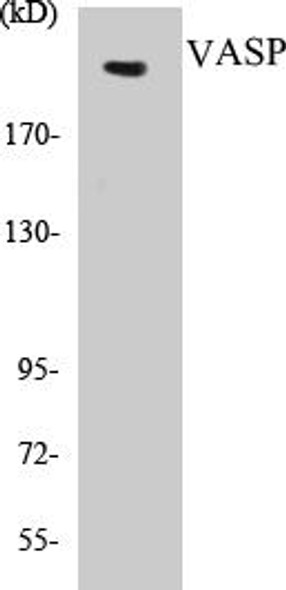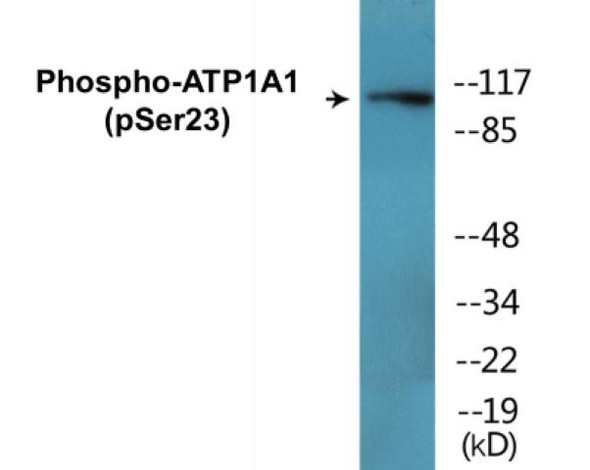Tuberin/TSC2 (Phospho-Ser939) Colorimetric Cell-Based ELISA Kit
- SKU:
- CBCAB00238
- Product Type:
- ELISA Kit
- ELISA Type:
- Cell Based Phospho Specific
- Research Area:
- Immunology
- Reactivity:
- Human
- Mouse
- Rat
- Detection Method:
- Colorimetric
Description
Tuberin/TSC2 (Phospho-Ser939)Colorimetric Cell-Based ELISA Kit
The Tuberin (TSC2) Phospho-Ser939 Colorimetric Cell-Based ELISA Kit is a powerful tool for measuring the levels of phosphorylated TSC2 at Ser939 in cell lysates. This kit offers high sensitivity and specificity, allowing for accurate and reproducible results in a variety of research applications.Phosphorylation of TSC2 at Ser939 is an important regulatory mechanism in the mTOR signaling pathway, which plays a critical role in cell growth, proliferation, and metabolism. Dysregulation of this pathway is associated with a variety of diseases, including cancer, neurodevelopmental disorders, and metabolic syndromes, making the TSC2 Phospho-Ser939 ELISA Kit a valuable tool for studying these conditions and identifying potential therapeutic targets.
By using this kit, researchers can gain valuable insights into the role of TSC2 phosphorylation in cellular signaling pathways and disease pathogenesis, ultimately advancing our understanding of these complex biological processes.
| Product Name: | Tuberin/TSC2 (Phospho-Ser939) Colorimetric Cell-Based ELISA |
| Product Code: | CBCAB00238 |
| ELISA Type: | Cell-Based |
| Target: | Tuberin/TSC2 (Phospho-Ser939) |
| Reactivity: | Human, Mouse, Rat |
| Dynamic Range: | > 5000 Cells |
| Detection Method: | Colorimetric 450 nm |
| Format: | 2 x 96-Well Microplates |
The Tuberin/TSC2 (Phospho-Ser939) Colorimetric Cell-Based ELISA Kit is a convenient, lysate-free, high throughput and sensitive assay kit that can detect Tuberin/TSC2 protein phosphorylation and expression profile in cells. The kit can be used for measuring the relative amounts of phosphorylated Tuberin/TSC2 in cultured cells as well as screening for the effects that various treatments, inhibitors (ie. siRNA or chemicals), or activators have on Tuberin/TSC2 phosphorylation.
Qualitative determination of Tuberin/TSC2 (Phospho-Ser939) concentration is achieved by an indirect ELISA format. In essence, Tuberin/TSC2 (Phospho-Ser939) is captured by Tuberin/TSC2 (Phospho-Ser939)-specific primary antibodies while the HRP-conjugated secondary antibodies bind the Fc region of the primary antibody. Through this binding, the HRP enzyme conjugated to the secondary antibody can catalyze a colorimetric reaction upon substrate addition. Due to the qualitative nature of the Cell-Based ELISA, multiple normalization methods are needed:
| 1. | A monoclonal antibody specific for human GAPDH is included to serve as an internal positive control in normalizing the target absorbance values. |
| 2. | Following the colorimetric measurement of HRP activity via substrate addition, the Crystal Violet whole-cell staining method may be used to determine cell density. After staining, the results can be analysed by normalizing the absorbance values to cell amounts, by which the plating difference can be adjusted. |
| Database Information: | Gene ID: 7249, UniProt ID: P49815, OMIM: 191092/191100/606690, Unigene: Hs.66196/Hs.90303 |
| Gene Symbol: | TSC2 |
| Sub Type: | Phospho |
| UniProt Protein Function: | TSC2: a product of the tumor suppressor gene TSC2. Tuberin and Hamartin (TSC1) form a tumor suppressor heterodimer that inhibits the mTOR nutrient signaling input. TSC1/TSC2 targets the small G protein Rheb, a novel mediator of the nutrient signaling input to mTOR. Functions as a Rheb GTPase activating protein (GAP). Four alternatively spliced isoforms have been described. |
| UniProt Protein Details: | Protein type:Cell cycle regulation; GAP; GAP, misc.; Nuclear receptor co-regulator; Tumor suppressor Chromosomal Location of Human Ortholog: 16p13.3 Cellular Component: cytoplasm; cytosol; Golgi apparatus; lysosome; membrane; nucleus; perinuclear region of cytoplasm; TSC1-TSC2 complex Molecular Function:GTPase activator activity; phosphatase binding; protein binding; protein homodimerization activity; small GTPase binding Biological Process: anoikis; cell cycle arrest; endocytosis; heart development; insulin-like growth factor receptor signaling pathway; negative regulation of cell proliferation; negative regulation of insulin receptor signaling pathway; negative regulation of phosphoinositide 3-kinase cascade; negative regulation of protein kinase activity; negative regulation of protein kinase B signaling cascade; negative regulation of TOR signaling pathway; negative regulation of Wnt receptor signaling pathway; neural tube closure; positive chemotaxis; positive regulation of macroautophagy; protein import into nucleus; protein kinase B signaling cascade; protein localization; regulation of cell cycle; regulation of endocytosis; regulation of insulin receptor signaling pathway; vesicle-mediated transport Disease: Focal Cortical Dysplasia Of Taylor; Lymphangioleiomyomatosis; Tuberous Sclerosis 2 |
| NCBI Summary: | Mutations in this gene lead to tuberous sclerosis complex. Its gene product is believed to be a tumor suppressor and is able to stimulate specific GTPases. The protein associates with hamartin in a cytosolic complex, possibly acting as a chaperone for hamartin. Alternative splicing results in multiple transcript variants encoding different isoforms. [provided by RefSeq, Jul 2008] |
| UniProt Code: | P49815 |
| NCBI GenInfo Identifier: | 269849475 |
| NCBI Gene ID: | 7249 |
| NCBI Accession: | P49815.2 |
| UniProt Secondary Accession: | P49815,O75275, Q4LE71, Q8TAZ1, A7E2E2, B4DIL8, B4DIQ7 B4DRN2, B7Z2B8, C9J378, |
| UniProt Related Accession: | P49815 |
| Molecular Weight: | 25,773 Da |
| NCBI Full Name: | Tuberin |
| NCBI Synonym Full Names: | tuberous sclerosis 2 |
| NCBI Official Symbol: | TSC2 |
| NCBI Official Synonym Symbols: | LAM; TSC4; PPP1R160 |
| NCBI Protein Information: | tuberin |
| UniProt Protein Name: | Tuberin |
| UniProt Synonym Protein Names: | Tuberous sclerosis 2 protein |
| Protein Family: | Tuberin |
| UniProt Gene Name: | TSC2 |
| Component | Quantity |
| 96-Well Cell Culture Clear-Bottom Microplate | 2 plates |
| 10X TBS | 24 mL |
| Quenching Buffer | 24 mL |
| Blocking Buffer | 50 mL |
| 15X Wash Buffer | 50 mL |
| Primary Antibody Diluent | 12 mL |
| 100x Anti-Phospho Target Antibody | 60 µL |
| 100x Anti-Target Antibody | 60 µL |
| Anti-GAPDH Antibody | 60 µL |
| HRP-Conjugated Anti-Rabbit IgG Antibody | 12 mL |
| HRP-Conjugated Anti-Mouse IgG Antibody | 12 mL |
| SDS Solution | 12 mL |
| Stop Solution | 24 mL |
| Ready-to-Use Substrate | 12 mL |
| Crystal Violet Solution | 12 mL |
| Adhesive Plate Seals | 2 seals |
The following materials and/or equipment are NOT provided in this kit but are necessary to successfully conduct the experiment:
- Microplate reader able to measure absorbance at 450 nm and/or 595 nm for Crystal Violet Cell Staining (Optional)
- Micropipettes with capability of measuring volumes ranging from 1 µL to 1 ml
- 37% formaldehyde (Sigma Cat# F-8775) or formaldehyde from other sources
- Squirt bottle, manifold dispenser, multichannel pipette reservoir or automated microplate washer
- Graph paper or computer software capable of generating or displaying logarithmic functions
- Absorbent papers or vacuum aspirator
- Test tubes or microfuge tubes capable of storing ≥1 ml
- Poly-L-Lysine (Sigma Cat# P4832 for suspension cells)
- Orbital shaker (optional)
- Deionized or sterile water
*Note: Protocols are specific to each batch/lot. For the correct instructions please follow the protocol included in your kit.
| Step | Procedure |
| 1. | Seed 200 µL of 20,000 adherent cells in culture medium in each well of a 96-well plate. The plates included in the kit are sterile and treated for cell culture. For suspension cells and loosely attached cells, coat the plates with 100 µL of 10 µg/ml Poly-L-Lysine (not included) to each well of a 96-well plate for 30 minutes at 37°C prior to adding cells. |
| 2. | Incubate the cells for overnight at 37°C, 5% CO2. |
| 3. | Treat the cells as desired. |
| 4. | Remove the cell culture medium and rinse with 200 µL of 1x TBS, twice. |
| 5. | Fix the cells by incubating with 100 µL of Fixing Solution for 20 minutes at room temperature. The 4% formaldehyde is used for adherent cells and 8% formaldehyde is used for suspension cells and loosely attached cells. |
| 6. | Remove the Fixing Solution and wash the plate 3 times with 200 µL 1x Wash Buffer for five minutes each time with gentle shaking on the orbital shaker. The plate can be stored at 4°C for a week. |
| 7. | Add 100 µL of Quenching Buffer and incubate for 20 minutes at room temperature. |
| 8. | Wash the plate 3 times with 1x Wash Buffer for 5 minutes each time. |
| 9. | Add 200 µL of Blocking Buffer and incubate for 1 hour at room temperature. |
| 10. | Wash 3 times with 200 µL of 1x Wash Buffer for 5 minutes each time. |
| 11. | Add 50 µL of 1x primary antibodies Anti-Tuberin/TSC2 (Phospho-Ser939) Antibody, Anti-Tuberin/TSC2 Antibody and/or Anti-GAPDH Antibody) to the corresponding wells, cover with Parafilm and incubate for 16 hours (overnight) at 4°C. If the target expression is known to be high, incubate for 2 hours at room temperature. |
| 12. | Wash 3 times with 200 µL of 1x Wash Buffer for 5 minutes each time. |
| 13. | Add 50 µL of 1x secondary antibodies (HRP-Conjugated AntiRabbit IgG Antibody or HRP-Conjugated Anti-Mouse IgG Antibody) to corresponding wells and incubate for 1.5 hours at room temperature. |
| 14. | Wash 3 times with 200 µL of 1x Wash Buffer for 5 minutes each time. |
| 15. | Add 50 µL of Ready-to-Use Substrate to each well and incubate for 30 minutes at room temperature in the dark. |
| 16. | Add 50 µL of Stop Solution to each well and read OD at 450 nm immediately using the microplate reader. |
(Additional Crystal Violet staining may be performed if desired – details of this may be found in the kit technical manual.)










